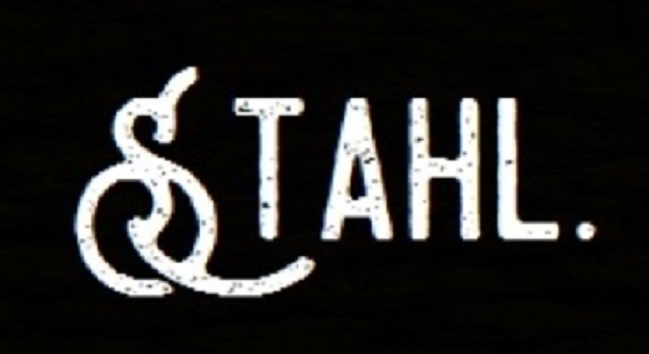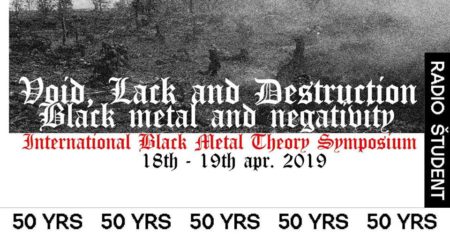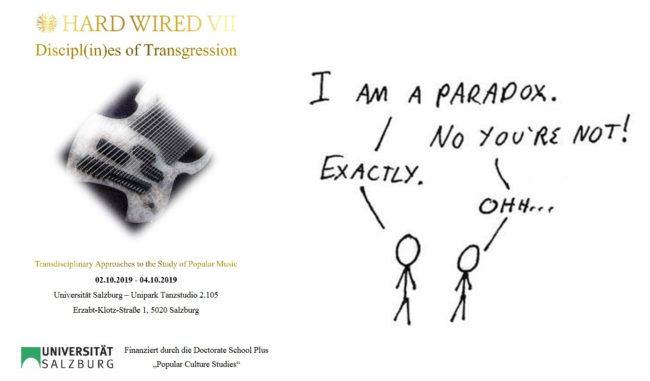In an earlier post, I wrote about heuristics in our project. The aim was to describe a conceptual framework, which (provisionally) maps the field we want to explore. I labelled this field as the one the history of ‘norm-related sonic knowledge’, i.e. the cultural history of law-related phenomena in heavy metal culture. Thus, currently, we have a concept of how to approach the field heuristically; this concept will be honed in the course of the exploration.
What we do not have at this point, is an accurate idea how such norm-related sonic knowledge ‘works’ in mundane everyday contexts. A good way to start thinking of this aspect is looking at the mass-medial representations of norm-related sonic knowledge; especially at cases that represent the flux between metal culture and the ‘mainstream’.
Beavis & Butthead as a case study of norm-related sonic knowledge
The case I want to analyze in this post is the well-known cartoon series ‘Beavis and Butthead’. Originally, it was aired on MTV between 1993 and 1997. At its core, it is a parody and satire. In their grotesque adventures, the notoriosly dumb and stereotyped teenage metalheads Beavis and Butthead face a stereotypedly conservative American society. Hence, the series can be interpreted as a satirical portrait of both the U.S. in the 1990s1 and metal culture.2
What is not researched at all in metal studies is the fact that law and law-related phenomena always haved play a crucial role in the main protagonists’ adventures. On several occasions, Beavis and Butthead have to do with the police, are locked up in jail, face lawyers or other people and institutions that represent the law and/or the American legal system. As the series was a massive mainstream success and was created by people that know metal culture well, it is a rich case study of flux between both fields. Below, I will discuss and analyze two key situations, where one can unpack how norm-related sonic knowledge ‘worked’ in the series.
Beavis & Butthead face the law
On YouTube, one can find a good deal of clips in which Beavis & Butthead have been arrested. Being arrested is a legal procedure. Prisoners face the law in the personae of the police forces that arrested them, the lawyers that work with them, etc. Here, the broken laws are portrayed to form a seemingly threatening, perhaps conservative body of rules that control and govern our two heroes. This clip is paradigmatic:
Beavis and Butthead are locked into in a cell with some other inmates. The funny climax of the narrative is that all of the inmates in this cell are Iron Maiden fans. When the policeman opens the door to ‘check on those two kids’, all people in the cell are singing the Maiden song ‘The Prisoner’. Under arrest, the ‘two kids’ are not scared at all but even founded a little metal ‘scene’ in the cell.
The situation is full of paradigmatic details. Law-related phenomena play a crucial role in the narrative. In the cell, all the other inmates (who seem to be stereotyped ‘rednecks’) are metalheads. When discovering their shared metalness and singing ‘The Prisoner’ (also a reference to a law-related phenomenon) they form an ‘instant metal community’. Doing so, they constitute a group of ‘outlaws’. Their position outside the legal order depends on their shared metal identity. Law is the field that makes emerge metal culture and the mainstream – and the differences between both.
Beavis & Butthead ‘break’ the law
Whereas in the first situation the two protagonists face the law and have to surrender to it factually, in the following clips they seem to transgress the law and ‘break’ it:
In a perfectly absurd scene, Beavis uses a chainsaw to injure his friend Butthead. In the course of the short scene, they start to sing the Judas Priest classic ‘Breaking the Law’. Finally, Butthead comments upon what they just did with his usual “That was cool!” We should see this clip in its close relation to the following:
Here, the two teenage metalheads put a poodle dog into a washing machine and see what happens when switching it on. The punchline is that they comment upon this singing, once more, the Priest classic; but this time they substitute the hookline ‘breaking the law’ with ‘washing the dog’. Hence, the narrative of the outlaw at the core of the song’s lyrics (it is about a jobless character, who uses law-breaking as a means of social empowerment) becomes fully absurd and ridiculed, a parody of both: metal and the ‘mainstream’.
Law as the thin line between metal and the ‘mainstream’
Only seemingly these are just the hilarious tales of two not really smart teenage metalheads in the America of the 1990s. There is much more to it. In both settings – in the situation in the prison and when referencing ‘Breaking the Law’ – law-related phenomena were crucial. When facing the law, Beavis and Butthead (and their fellow prisoners) constitute an ‘instant metal community’ around their shared vision of law-breaking. In the second case, metal’s own vision of ‘breaking the law’ as empowerment (in opposition to the mainstream) is attacked in a parody.
In a nutshell, law-related phenomena were the territory on which metal and the ‘mainstream’ touched upon each other. In the series, law drew the thin line between the ‘greater society’ and the metal subculture. Norm-related sonic knowledge worked here in a paradigmatic way: The metal scenes’s vision of law allowed the scene to constitute its own community, perfectly illustrated in the first clip. The mainstream’s supposed ‘law and order’ approach allowed to mark the metalheads as the ‘outsiders’; illustrated in the second example. This mass-medial case is one point of departure to develop a more detailed idea of how norm-related sonic could also have worked in the history of Styrian metal community since 1980.
See B. Klypchak, ‘How you gonna see me now’: Recontextualizing metal artists and moral panics. Popular Music History, 6(1/2), 2011, pp. 36-49 ↩
See P. Pichler, Metal Music, Sonic Knowledge, and the Cultural Ear in Europe since 1970: A Historiographic Exploration, Stuttgart: Franz Steiner, in press. ↩




